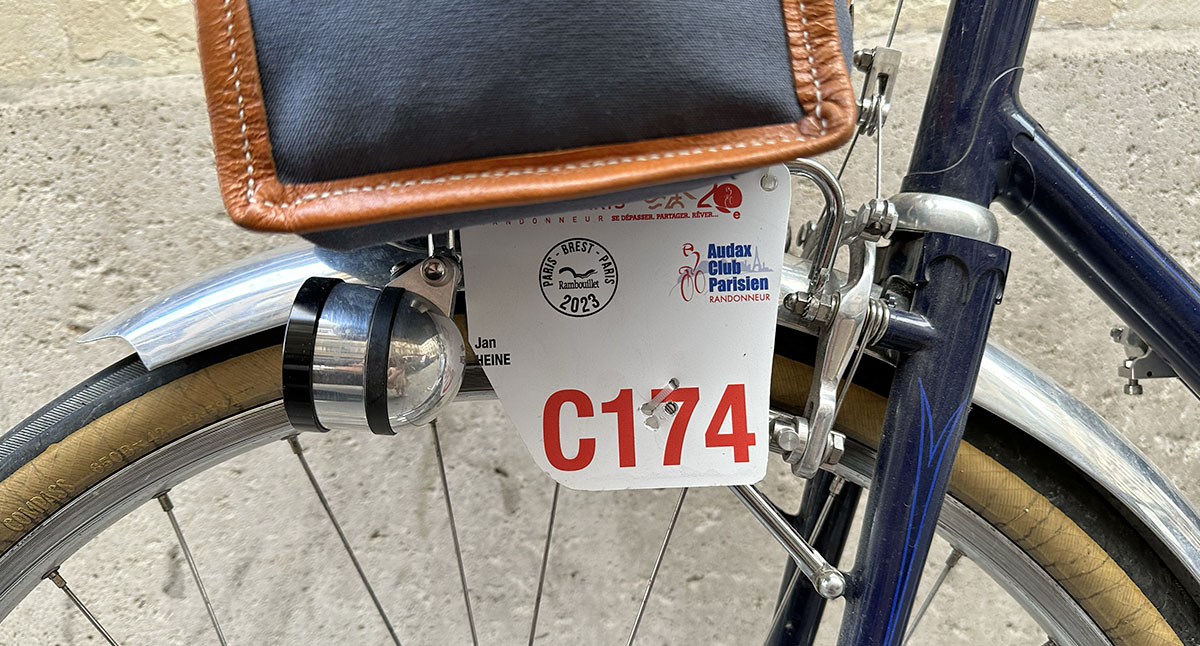Jan’s Bike After Paris-Brest-Paris
If you’ve read the previous post, you know that this year’s Paris-Brest-Paris wasn’t without challenges. It was a hard ride, and if the final result is actually quite respectable (60:05 hours for the 1218 km), that’s due in large part to my bike. Not only did it perform flawlessly, but it also made it easy to keep going when my legs would rather have stopped.
During PBP, many riders were curious about my bike. Almost all were surprised when they asked about the weight: At 10.3 kg fully equipped (with fenders, rack, lights, bottle cages, pedals, pump, etc.), it’s much lighter than most riders imagine. In fact, once you add all the luggage and heavy battery-powered lights, my bike is lighter than many of the carbon race bikes you typically see in PBP. (Riders who have support with RVs waiting for them at every control can ride lighter bikes, but I prefer to ride unsupported.)
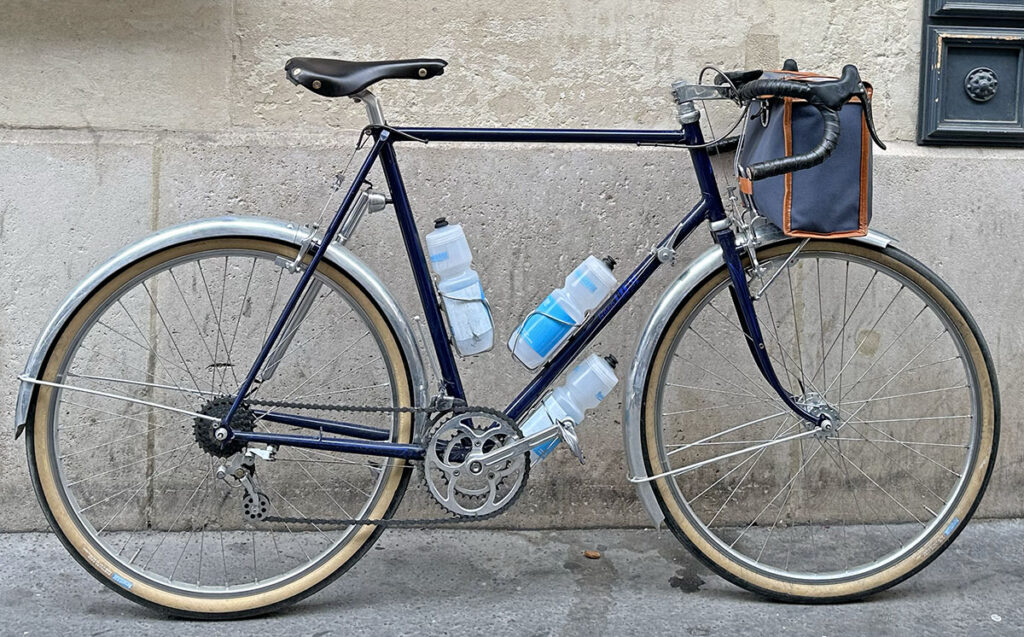
I rode the same Rene Herse as I did four years ago during the previous Paris-Brest-Paris. These bikes now are mature technology, and there isn’t really anything I’d change. Back in 2019, my bike was brand-new. Now it’s nicely worn in.
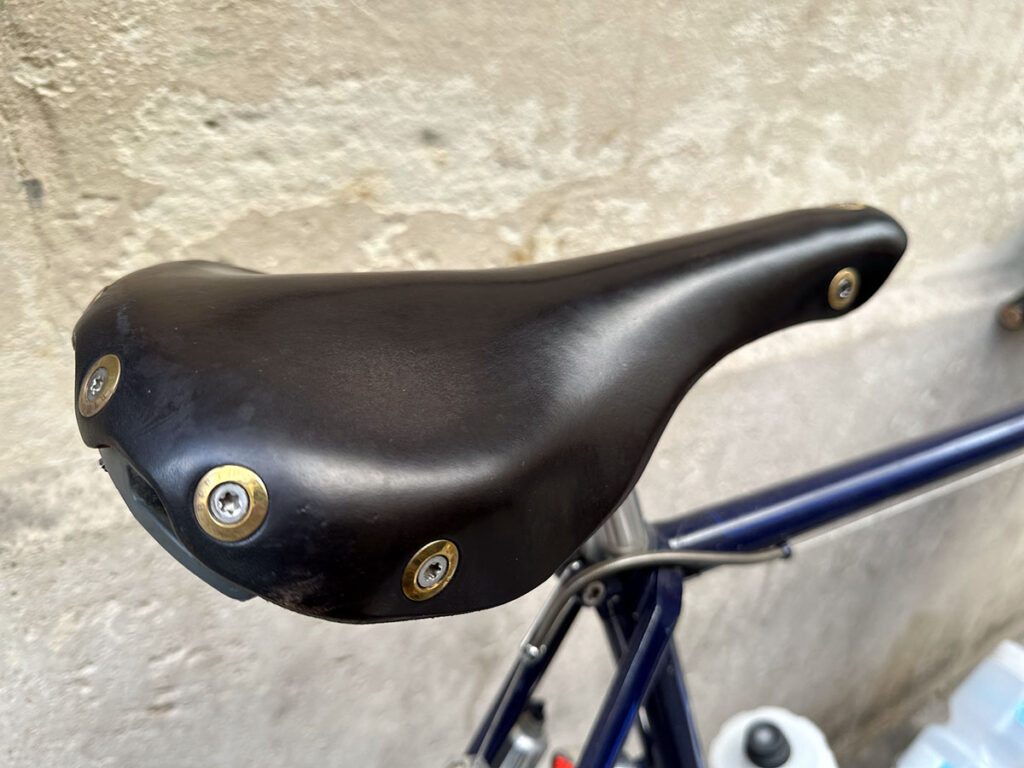
The saddle leather has softened and feels like the proverbial glove. The top has shaped itself to fit my anatomy perfectly. (I’ll be able to ride synthetic saddles on these long rides once they’re offered with dimples that match my sitbones.)
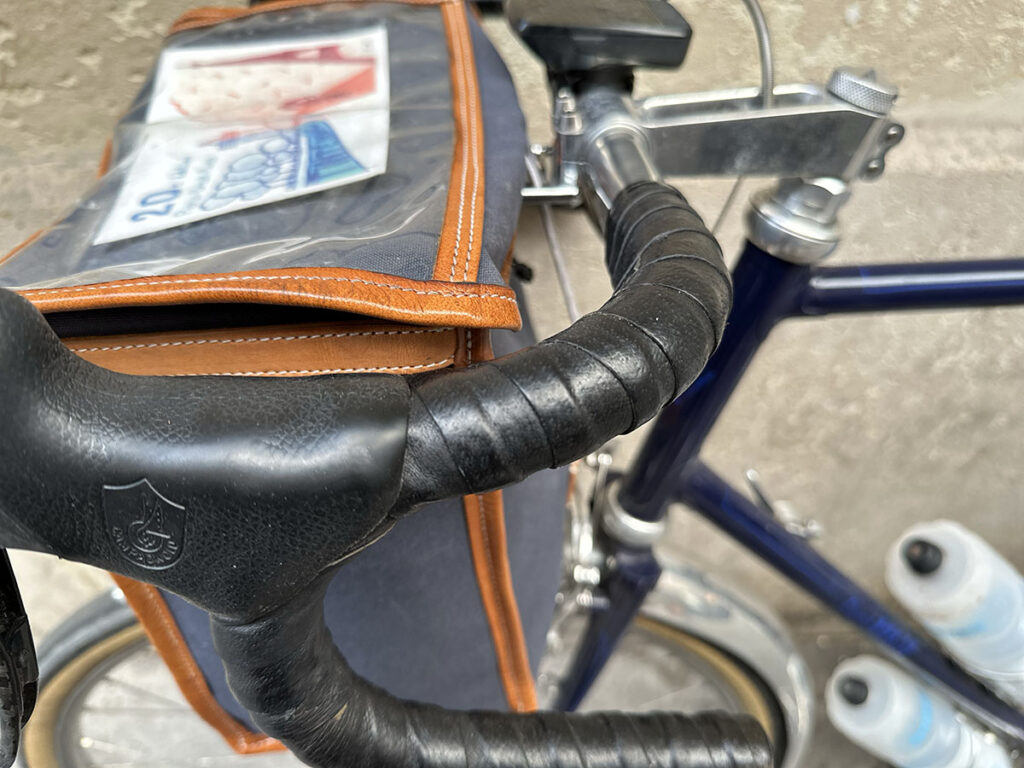
The Maware handlebar tape also has a little patina. I rode much of PBP without gloves, and I love the luxurious feel of fine leather when I touch the bars. (I fully understand and respect that some riders prefer vegan options for saddle and tape.)
The Rene Herse Randonneur handlebars are based on a mid-century shape that was designed for long rides like these. The upsweep gives them a three-dimensional curve that fits perfectly into the cups of my hands when I ride behind the brake hoods. The deep drop allows for a significantly lower position, useful when riding into strong headwinds. The generous curves give me room to roam, and they allow me to find that perfect position to match my anatomy.
For this year’s PBP, I mounted 40 cm-wide handlebars to improve the aerodynamics. I suspect it’s not just the narrower width that makes them noticeably more aero, but also the smaller gap between the handlebar bag and the brake levers. First tests indicate that the bike is faster with the bag than without.
This may also explain why, in our wind tunnel tests, a ‘fairing’ with rounded corners was less aero than the boxy bag. The rounded corners apparently channel air into the gap between the bag and the brake levers/bars and increase turbulence. Of course, aerodynamics are complex and hard to figure out. All I can really say is that this bike rolls better than most as soon as the road turns downhill.
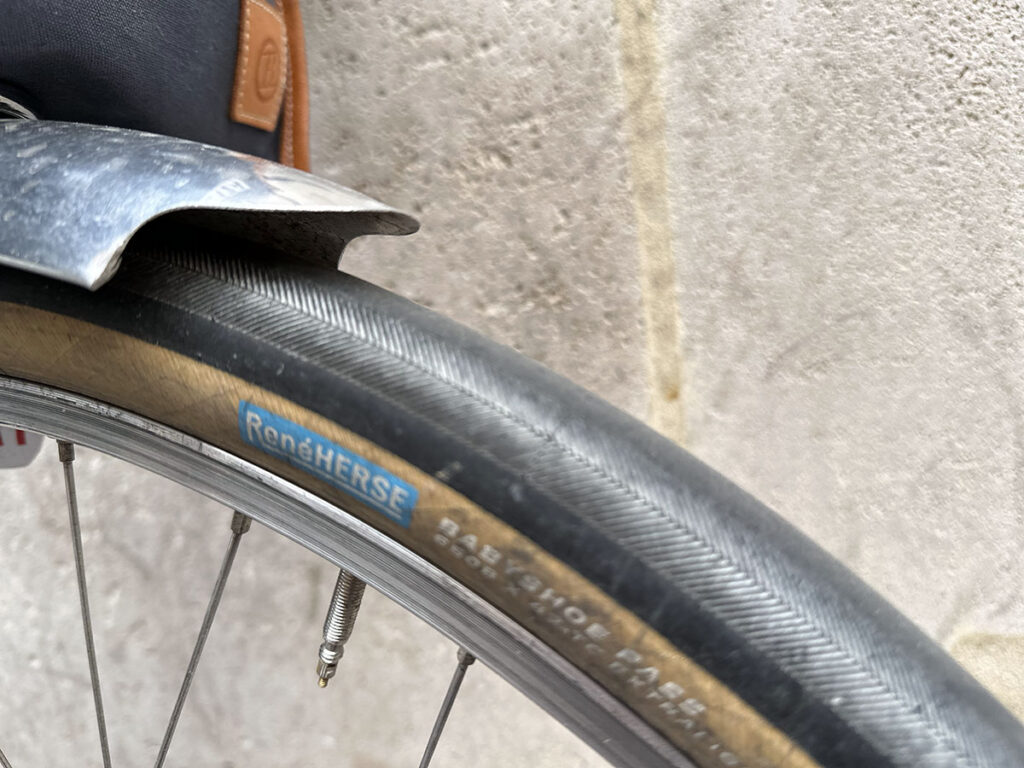
The tires show some wear. The front already did most of the qualifying brevets, but it had enough life left, and I didn’t feel the need to change it for the big ride. I had zero tire issues during those 1200 km.
I run 42 mm-wide tires on bikes intended mostly for pavement, because they soak up road buzz better than narrower tires. PBP included a few sections of cobblestones in small towns where I was especially happy with my tire choice. The Extralight casing is our most supple option: It maximizes comfort and speed, so it’s an obvious choice for a long ride on roads that are relatively clean. (In seven PBPs, I’ve had only two flats, both in 2007 when it was pouring rain.)
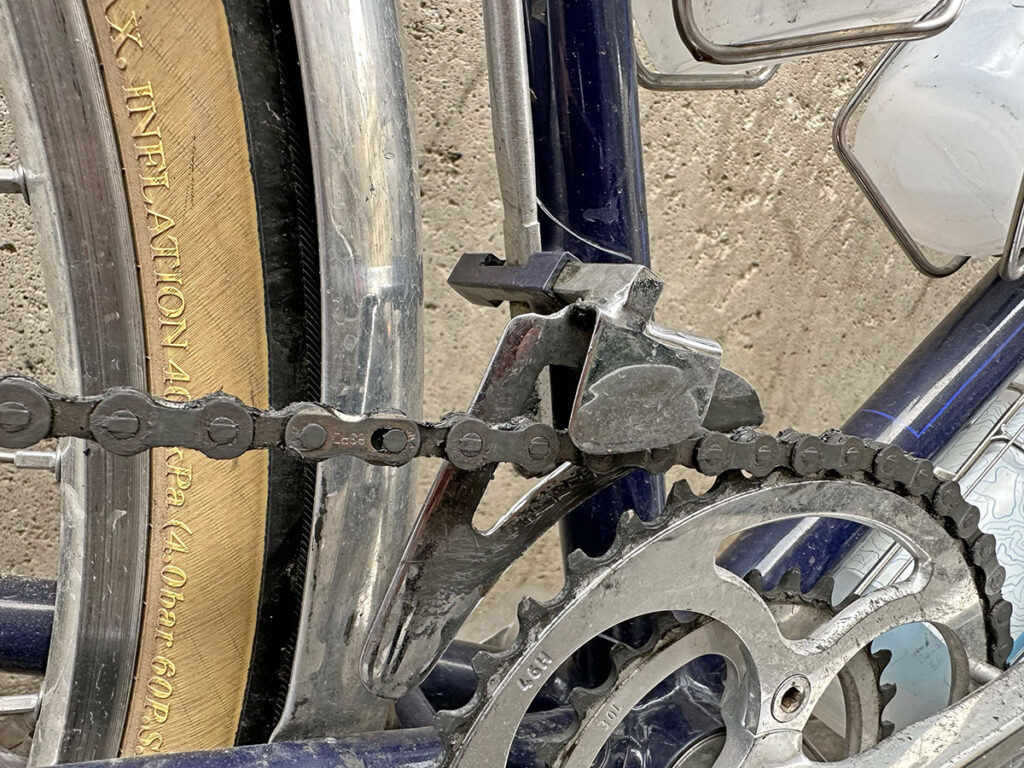
After a few thousand shifts over the course of 1200 hilly kilometers, the front derailleur is covered in chain oil. When other riders saw me doing a little stretch each time I shifted on the front, several said: “We should get our hands off the bars and stretch a bit, too!”
As an added bonus, the derailleur is superlight and so simple that there’s nothing to go wrong. The long lever moves the chain with force, just like a modern electronic derailleur. As a result, it shifts perfectly every time.
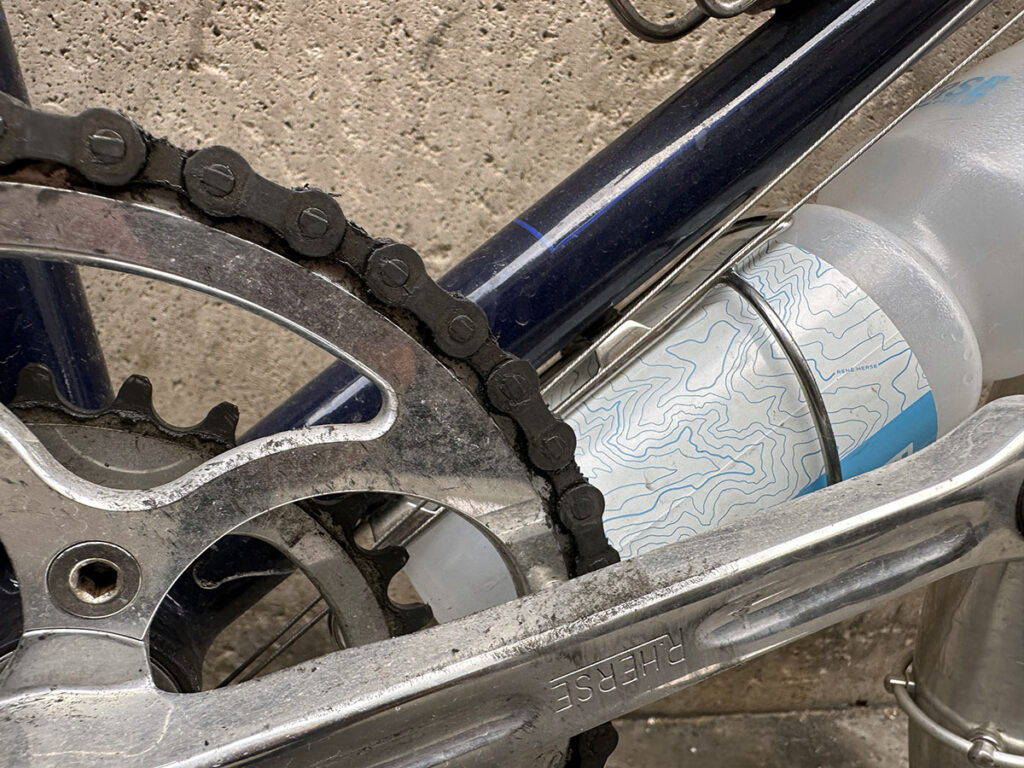
I love the patina of a long ride, like the oil mist deposited on the crankarm when the derailleur touched the chain during downshifts. I used DuMonde chain lube, which kept the chain silent during the long ride without the need to reapply lube.
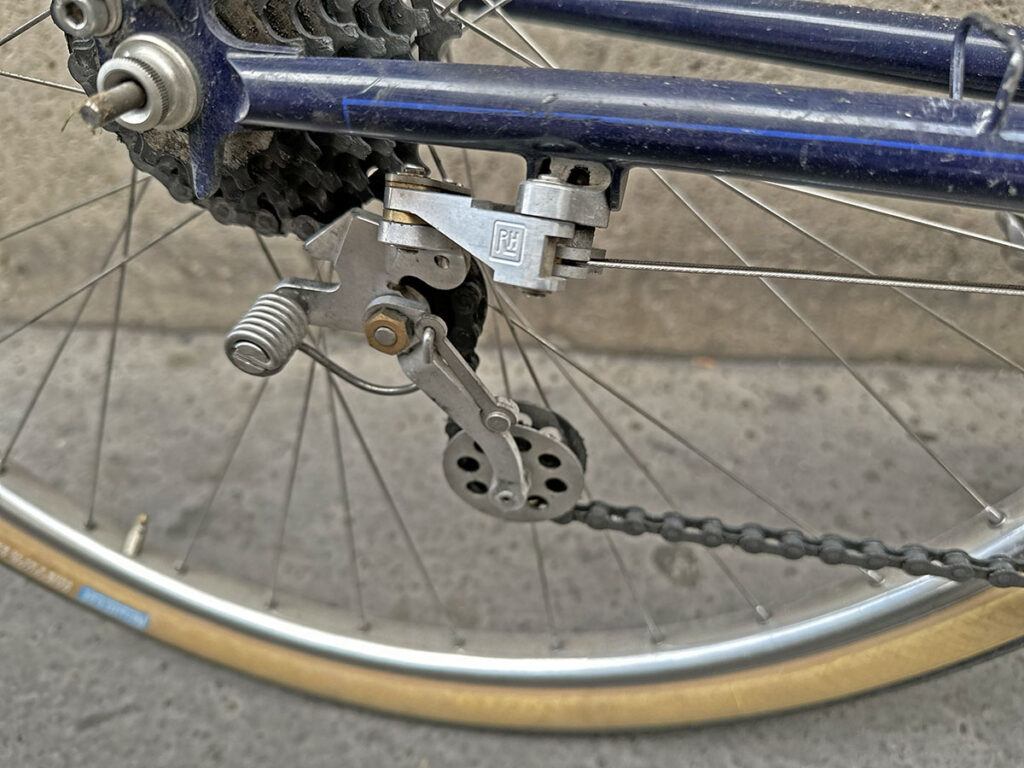
This time I ran the Nivex derailleur with a friction lever. I really enjoyed the immediate shifts and mechanical feedback of the Nivex. During all those miles, I had one shift that wasn’t perfect. From the crunching of gears I heard around me, that was probably less than most riders with indexed gears experienced. I used all my gears, but never felt the need for bigger or smaller ones.
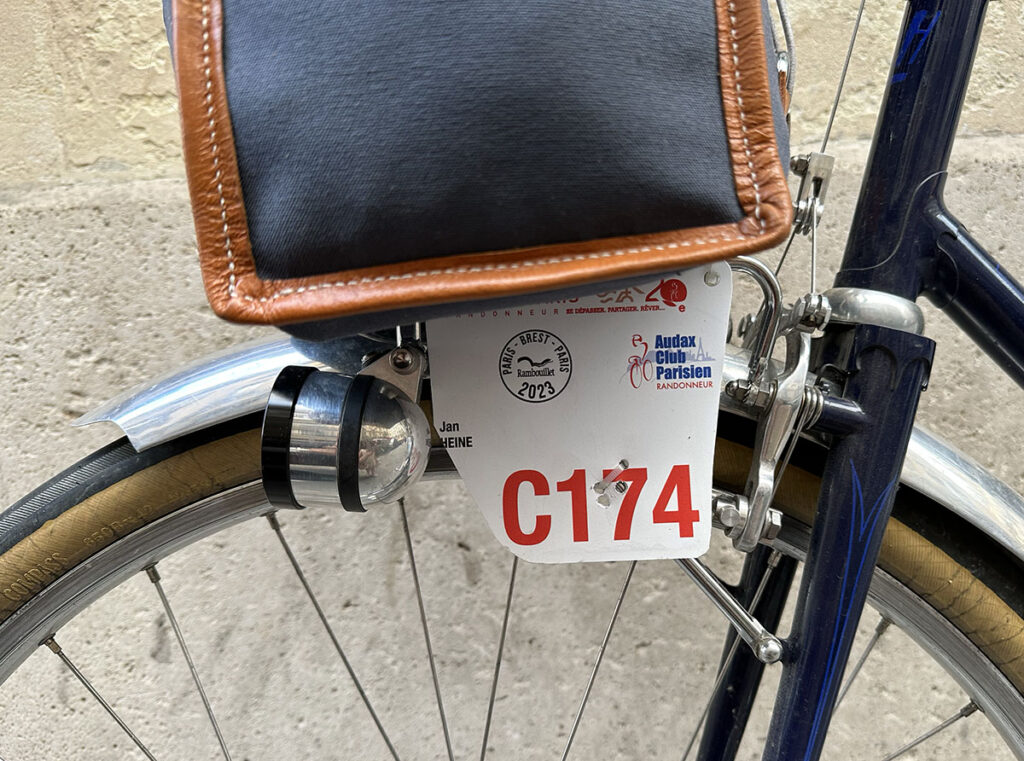
This year’s PBP course was hillier than previous editions and had some twisty, bumpy downhills that required good brakes to maximize speed and fun. Direct-mount centerpull brakes have pivots close to the fork crown, so the fork blades don’t twist, even when braking very hard. This makes for better braking and more linear modulation. Why no disc brakes? They are heavier and wouldn’t allow me to use the flexible Kaisei ‘Toei Special’ fork blades that add suspension.
Just as important as good brakes are good lights. I can’t even imagine any longer how we used to descend mountain passes at night before our bikes had Edelux lights with powerful LEDs and layered beams. (The answer is: much more slowly!) The layered beam puts more light into the distance, so that the road is illuminated evenly without annoying (and fatiguing) bright spots right in front of the bike. Car headlights are required by law to have layered beams, and there’s no reason why our bikes should have inferior lights.
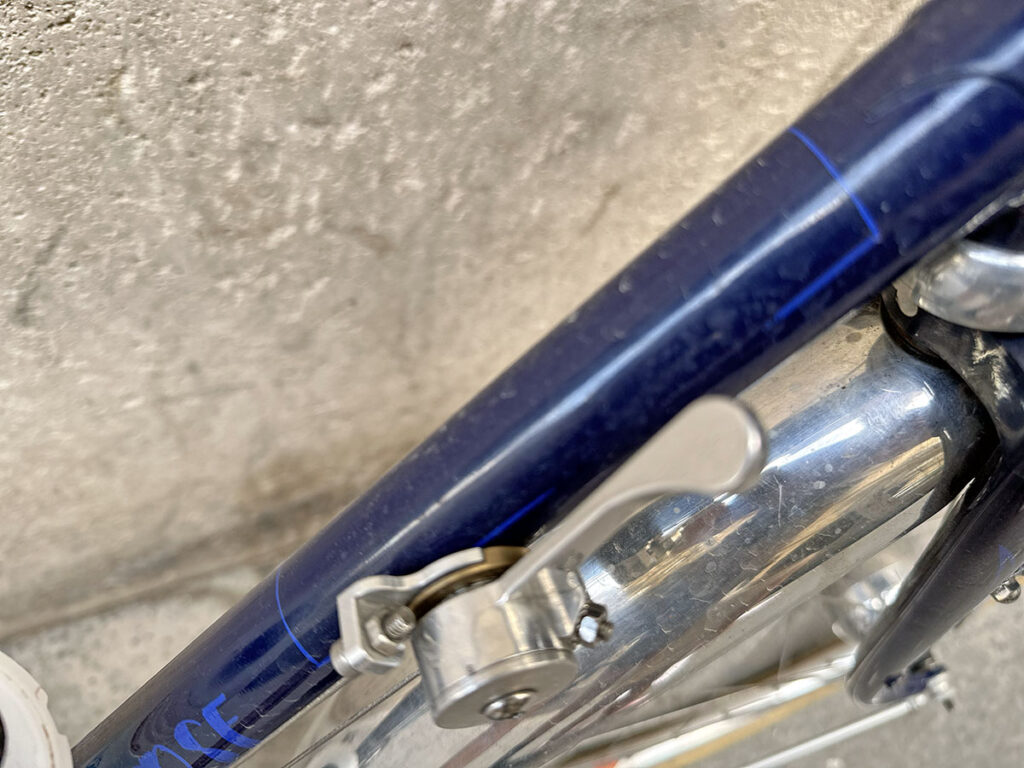
The many miles this bike has covered show in small things. The hand-painted line that outlines the frame tube has worn away where my fingers touch the down tube during shifts.
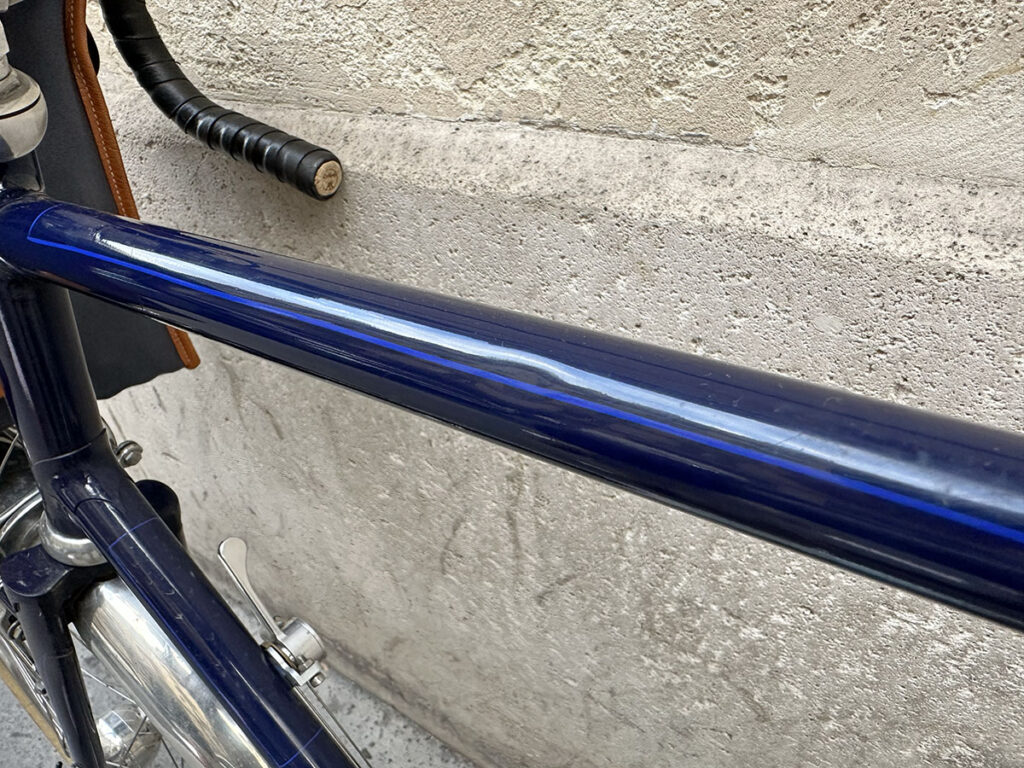
There are a few small dents in the superlight frame tubes. Overall, the heat-treated tubing has proven remarkably dent-resistant, especially considering how thin the walls are. This bike has been through a lot… It’s all part of the patina that reminds me of some great adventures. The upside of the superlight tubes is that this bike ‘planes’ so well. This bike entices me to give my best when things are going well—or to keep pedaling even when my body wants to stop. In this year’s PBP, I was lucky to have a bike that was an ally during those long hours on the road.
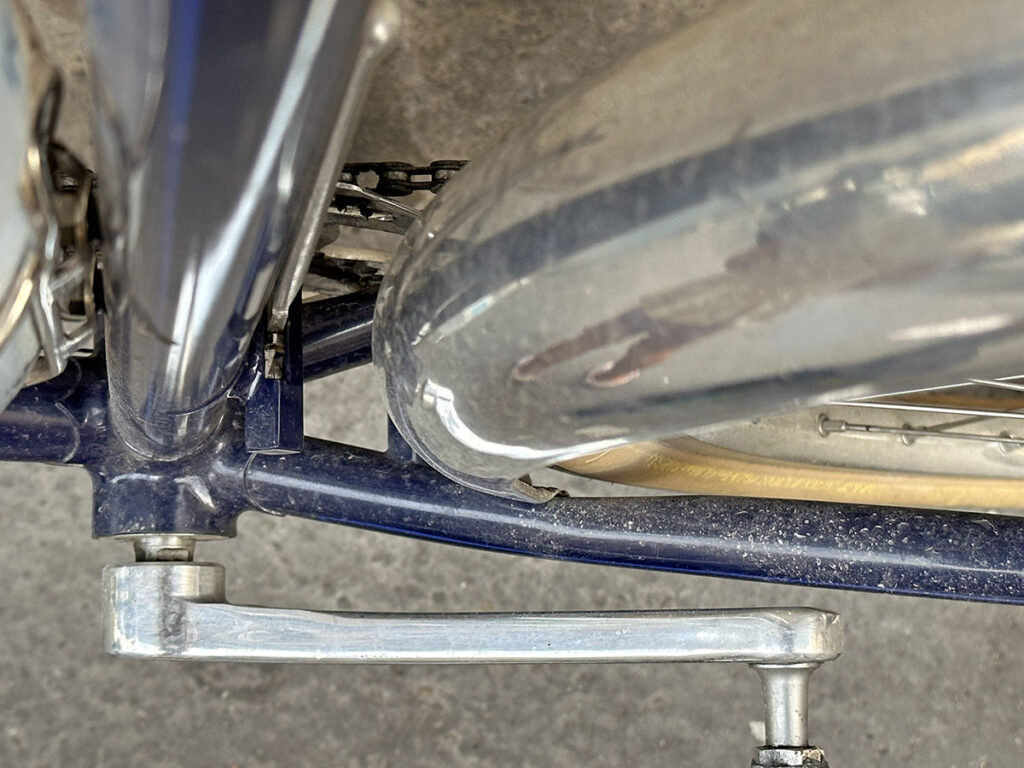
True beauty for me isn’t glossy paint and shiny components. It’s things that don’t change with age, like beautifully thinned lugs and perfect clearances for the 42 mm tires, fenders, beefy chainstays and narrow-Q cranks. The Q factor is just 139 mm on this bike, which really helps my spin during those long hours on the road.
Nothing broke or needed adjustment during this long ride. The bike was quiet, without rattles or resonances that can be annoying when riding long hours through the night. The bike became like an extension of my body—like a good running shoe, I never thought about it, but instead focused on the ride. Which was challenging enough on its own.
Specification:
- Frame: Rene Herse 650B, Rene Herse × Kaisei Superlight tubeset, curved chainstays; Rene Herse bottom bracket shell; custom-made lugs
- Fork: Kaisei ‘Toei Special’ blades; Rene Herse crown; Rene Herse SON SL dropouts
- Bottom bracket: Rene Herse pressed-in bearings (prototype)
- Cranks: Rene Herse 48×32; titanium crank bolts
- Pedals: Shimano PD-A600
- Cassette: Shimano Dura-Ace 7-speed 13-26
- Front derailleur: Rene Herse lever-operated (prototype)
- Rear derailleur: Nivex 6-8-speed short cage with friction shift lever
- Chain: SRAM 7/8-speed
- Front wheel: SON Delux Wide-Body SL hub; Pacenti Brevet rim; 28 Sapim Laser spokes, aluminum nipples
- Rear wheel: Maxi-Car hub; Pacenti Brevet rim; 36 Sapim Laser spokes, aluminum nipples
- Quick releases: Tune
- Tires: Rene Herse Babyshoe Pass Extralight 650B x 42 mm
- Stem: Rene Herse 100 mm
- Handlebars: Rene Herse Randonneur 25.4 mm, 400 mm wide
- Tape: Maware pigskin
- Brake levers: Campagnolo Record carbon
- Headset: Rene Herse roller bearing (prototype)
- Brakes: Rene Herse Centerpull Rinko, titanium bolts
- Fenders: Rene Herse H-80 650B Standard, tubular stays
- Mudflap: Rene Herse (carried in the bag in case it rained)
- Rack: Rene Herse CP-1
- Decaleur: Rene Herse
- Saddle: Berthoud Aravis titanium
- Seatpost: Nitto S-65, shortened
- Lights: SON Edelux II (front); Rene Herse taillight
- Bottle cages: Nitto 80 (2x); Nitto T (1x)
- Pump: Zefal Solibloc


